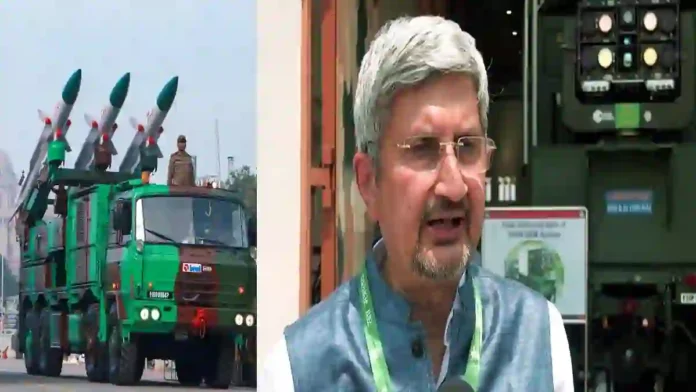Operation Sindoor has emerged as a significant milestone for India’s defence capabilities, with the Defence Research and Development Organisation (DRDO) chief, Dr. Samir Kamat, affirming the clear superiority of indigenous Indian weapons systems over Chinese-made systems deployed by Pakistan.
According to Dr. Kamat, Pakistan fielded a variety of Chinese-origin military hardware during the conflict, but Indian-made systems not only matched but decisively outperformed their counterparts on the battlefield.
Dr. Kamat highlighted that the operation served as a real-world validation of India’s push for self-reliance in defence, with indigenous platforms demonstrating superior performance in terms of effectiveness, precision, and reliability. Among the standout systems was the Nagastra-1 loitering munition, developed by Solar Defence and Aerospace Limited (SDAL), which played a pivotal role in the operation.
The propulsion systems for BrahMos missiles—used in strikes against Pakistani targets—were also sourced from Indian private industry, underscoring the growing synergy between public and private sectors in defence manufacturing.
Read- Deadly BrahMos, India’s Battlefield Proven Weapon Sparks Global
Read- India Successfully Tests High-Altitude Missile Over Andaman Islands Airspace
The DRDO chief’s visit to Nagpur included inspections of key defence manufacturing establishments, such as SDAL, DRDO’s chemical warfare unit, and BrahMos Aerospace Private Limited (BAPL). He emphasised the importance of a robust private sector to sustain and scale up operations during prolonged conflicts, reflecting the government’s broader ‘Aatmanirbhar Bharat’ (self-reliant India) initiative.
While celebrating these successes, Dr. Kamat acknowledged that the conflict also yielded important lessons. He indicated that DRDO is already moving to address gaps and further modernize India’s arsenal, particularly in areas such as drone warfare and electronic warfare. A key focus will be the rapid induction of advanced sensors and counter-drone technologies within the next six to twelve months, aiming to neutralise emerging aerial threats more effectively.
In terms of artillery, India’s drive for indigenisation has resulted in the development and deployment of systems like the Advanced Towed Artillery Gun System (ATAGS) and Dhanush guns, both of which have reduced the country’s reliance on foreign imports. ATAGS, for instance, is a 155 mm artillery gun with a 52-calibre barrel, capable of firing up to 40 km and offering enhanced lethality and automation. Over 65% of its components are domestically sourced, marking a significant leap for Indian defence manufacturing.
Looking ahead, DRDO is advancing several next-generation systems, including:
VSHORADS (Very Short Range Air Defence Systems), designed for rapid deployment and high mobility.
Man-Portable Anti-Tank Guided Missiles (MPATGM), which have recently completed successful trials and are tailored to counter enemy armour.
Vertically Launched Short-Range Surface-to-Air Missiles (VLSRSAM), heavyweight and lightweight torpedoes, and precision-guided munitions.
Dr. Kamat’s remarks and the outcomes of Operation Sindoor collectively reinforce the strategic value of indigenous defence technologies. They also highlight the critical role of public-private collaboration in strengthening India’s military preparedness for future conflicts, ensuring that the nation stays ahead in the rapidly evolving landscape of modern warfare.
Based On A TOI Report
Agencies




